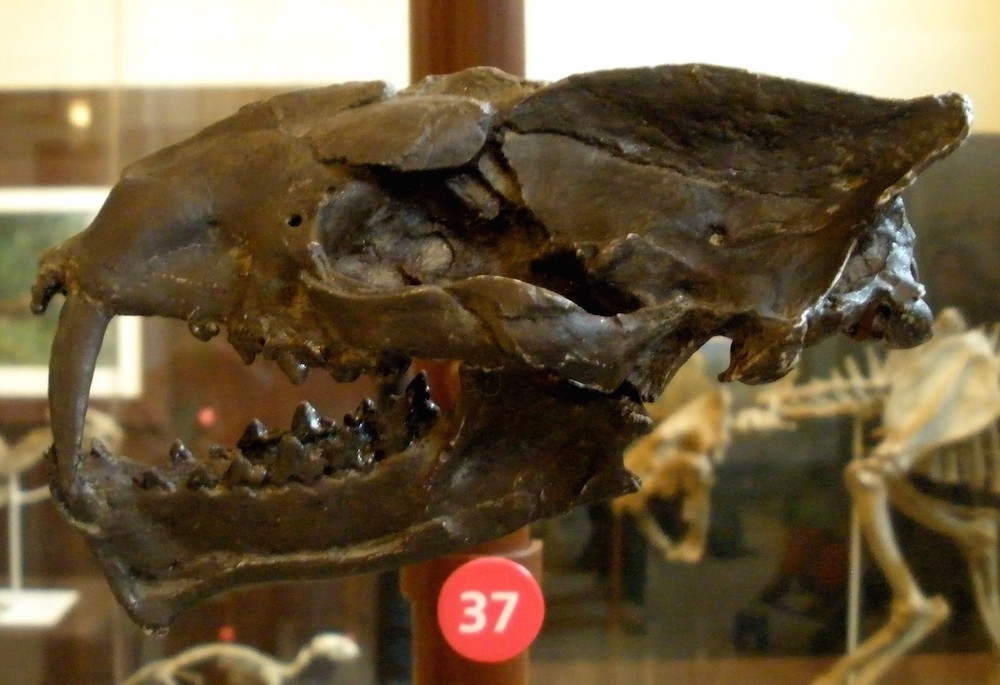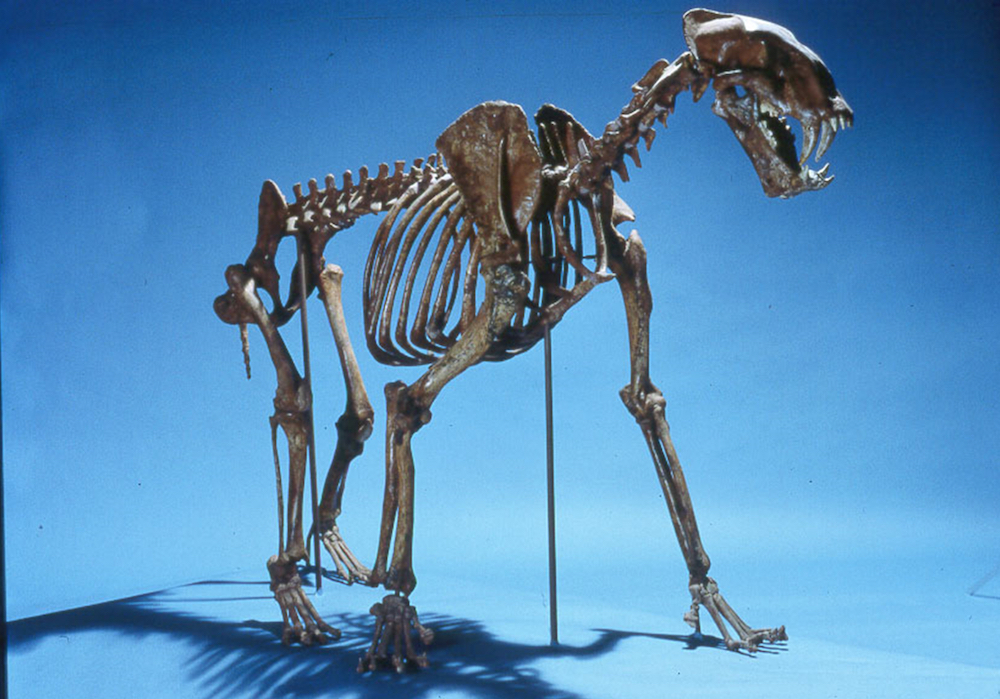My, what sharp teeth! 12 living and extinct saber-toothed animals
Dog-size beast

The Machaeroides are a genus of dog-size carnivores that lived during the early Eocene, about 50 million years ago. They lived before the nimravidae family developed, and are likely the oldest mammals with saber teeth, Tseng said.
Some of the Machaeroides had serrated sabers, he added.
"If it was totally smooth, without serrations, the teeth might get stuck," he said, "With a serration, you can cut through [the prey]."
Scimitar-toothed cat

The genus Homotherium migrated from Eurasia to North America. But though its remains are also found in the La Brea Tar Pits,Homotherium is far less common than the saber-toothed cat, according to a 1993 study in the journal PaleoBios.
Homotherium is also known as the scimitar-toothed cat (after the sword), largely because its upper canines were long, but not long enough to pass its lower jaw, according to Prehistoric Wildlife. Its sabers were also serrated, but relatively fragile, and would have plunged into prey in a vertical, not horizontal, motion.
Follow Laura Geggel on Twitter @LauraGeggel. Follow Live Science @livescience, Facebook & Google+.
- Top 10 Deadliest Animals
- Wipe Out: History's Most Mysterious Extinctions
- Top 10 Beasts and Dragons: How Reality Made Myth
Get the world’s most fascinating discoveries delivered straight to your inbox.

Laura is the managing editor at Live Science. She also runs the archaeology section and the Life's Little Mysteries series. Her work has appeared in The New York Times, Scholastic, Popular Science and Spectrum, a site on autism research. She has won multiple awards from the Society of Professional Journalists and the Washington Newspaper Publishers Association for her reporting at a weekly newspaper near Seattle. Laura holds a bachelor's degree in English literature and psychology from Washington University in St. Louis and a master's degree in science writing from NYU.


